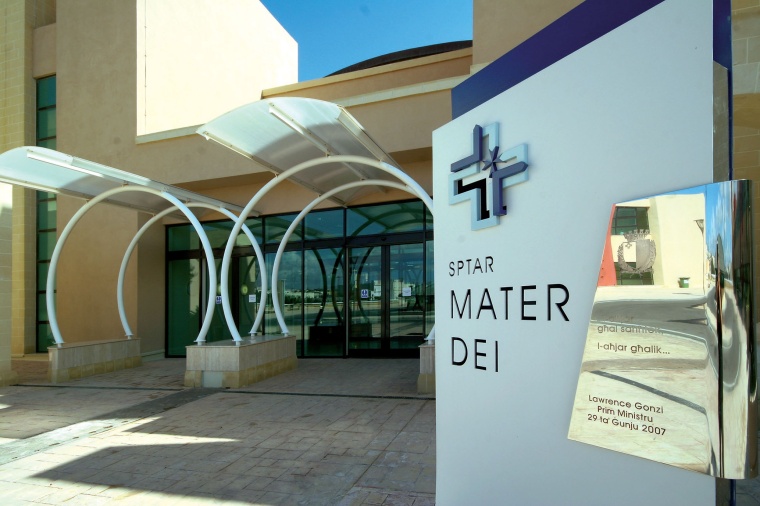Apollo Fire Detectors: protecting the largest civil construction project in Europe
Apollo Fire Detectors: protecting the largest civil construction project in Europe. Over 13,000 Apollo fire detection devices have been used to protect the Mater Dei Hospital, Malt...

Apollo Fire Detectors: protecting the largest civil construction project in Europe. Over 13,000 Apollo fire detection devices have been used to protect the Mater Dei Hospital, Malta, from the risk of fire. It is Europe’s largest civil construction project. The company tasked with designing, supplying, installing, configuring, testing and commissioning the new fire detection system is Alberta Fire & Security, which also won contracts relating to a number of other safety and security systems for the project.
The new 800 bed Mater Dei Hospital is the brainchild of Malta’s Foundation for Medical Services (FMS). Six years in the making, its complexities and technical challenges have demanded the skills of internationally renowned companies such as Skanska, ABB, Aster Grossi and Speier to bring it to completion.
Smoke detector manufacturer Apollo’s reputation for reliability and the flexibility of its product range in providing localised solutions helped Alberta to fulfil the fire detection contract. Edwin Aquilina, Project Manager, Alberta Fire & Security said: “This project is one of the largest ever seen in Malta. It required constant project management and the highest level of cooperation and co-ordination between all the parties concerned. Apollo helped us to meet all the challenges along the way. Its products are accredited to the highest international standards, which gives the client confidence in their reliability. Thanks to their use of an open protocol, there is a wide choice of compatible products which means that we could tailor solutions to specific circumstances – and in some cases we were able to proactively suggest solutions to the client’s requirements. Couple all this with easy installation and the capability to select different programming options, and you have a perfect partnership for meeting the client’s needs.”
Proven Technology
The fire detection system at the Mater Dei Hospital is based around Apollo’s Discovery range of intelligent fire detectors. Of particular importance on such a large project, the Discovery range allows for the provision of different levels of sensitivity depending on the needs of the space to be protected. This is possible because the company’s fire detectors feature five panel-selectable sensitivity bands that make them particularly adaptable to a wide range of environmental conditions.
To help to protect against unwanted alarms even further, devices in the Discovery range are also equipped with inbuilt drift compensation. They are LPCB approved to EN54 in every one of these modes.
Complex Requirements
The sheer scale of the development called for a networked fire detection system that could interface with other building systems as well as providing fire protection to the highest standard. The Mater Dei Hospital consists of two main and five satellite buildings, all of which interconnect at ground level. Ranging between five and seven storeys in height, the accommodation includes subterranean accommodation levels and four storeys of underground car parking.
The fire detection system consists of 15 advanced addressable fire control panels networked together. These panels control over 9,000 Apollo Discovery intelligent fire detectors, 2,300 sounders and 1,200 manual call points. In addition, there are over 700 input/output modules that enable the fire detection system to interface with other building services. Over 100 repeater panels and five large graphic repeaters are strategically positioned around the facility to enable an immediate and appropriate response to an alert from key staff at nursing stations and security posts.
Areas above 10 m in height, such as chapels, halls and auditoria, are fitted with beam detectors. Other special requirements include computer rooms and electricity substations, service ducts and plant rooms as well as hazardous materials stores that required intrinsically safe fire detectors.
The underground car parks are fitted with devices that have been IP rated to prevent dust ingress. All areas are equipped with audible alarms, with the exception of residential wards for the bedridden, where the alarm will show only at the nurses’ station to avoid distressing the patients. Plant and service areas, where high noise levels may be an issue, have both audible and visual alarms.
Wherever an alert is raised, the information is fed back to the security guard rooms and the nurses’ stations nearest the incident. An interface between the fire alarm network and the BMS enables the complex cause and effect sequences that ensure the evacuation plans for the building are activated correctly. These requirements vary depending on the occupants and use of each area.
Contact:
Rowland Davies
Apollo Fire Detectors Ltd,
Havant, United Kingdom
Tel.: +44 2392 492 412
Fax: +44 2392 492 754
rowland.davies@apollo-fire.co.uk
www.apollo-fire.co.uk













